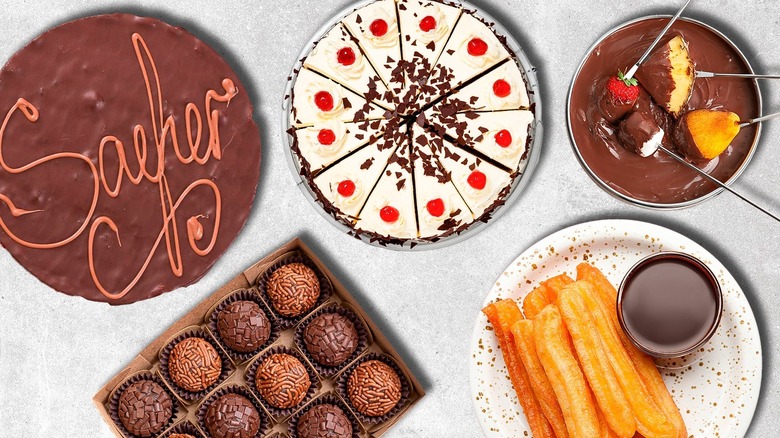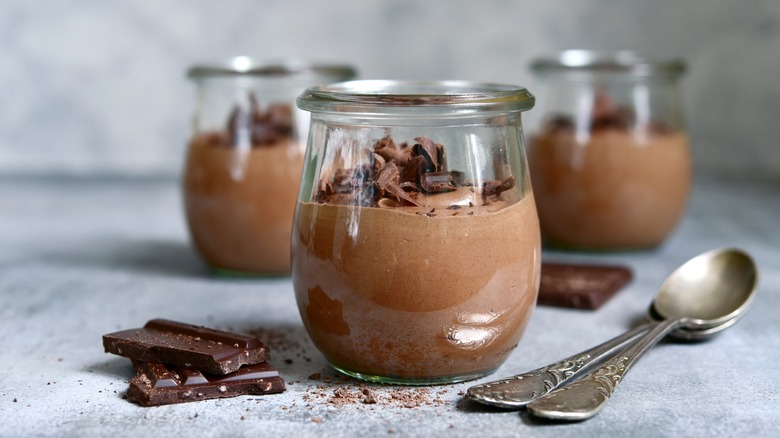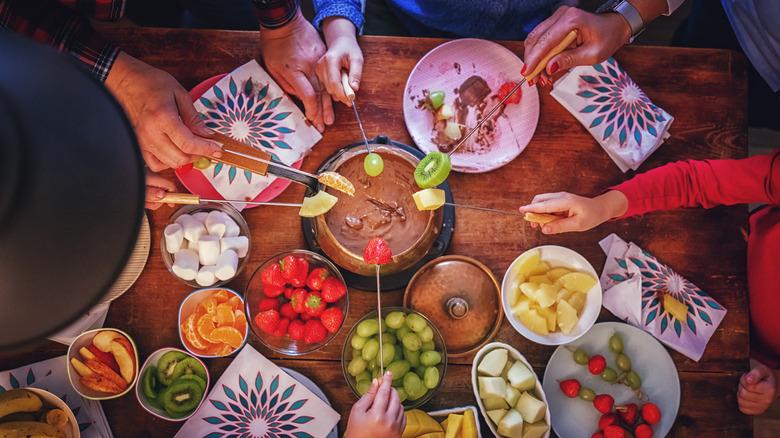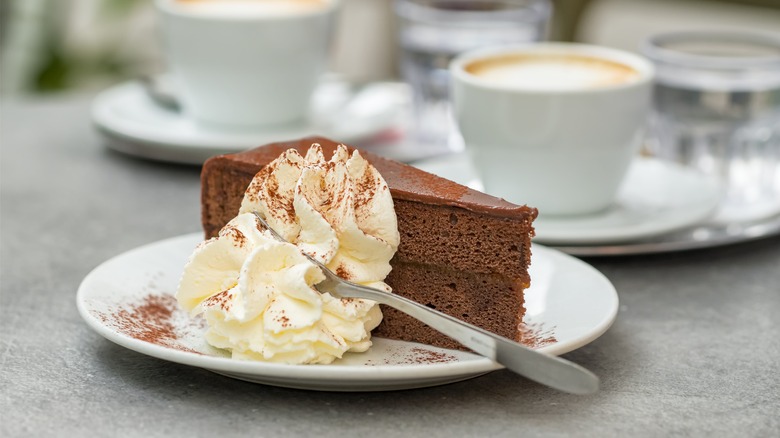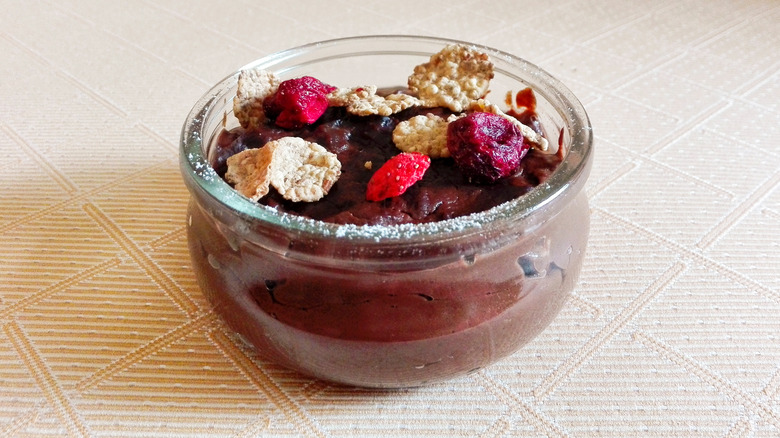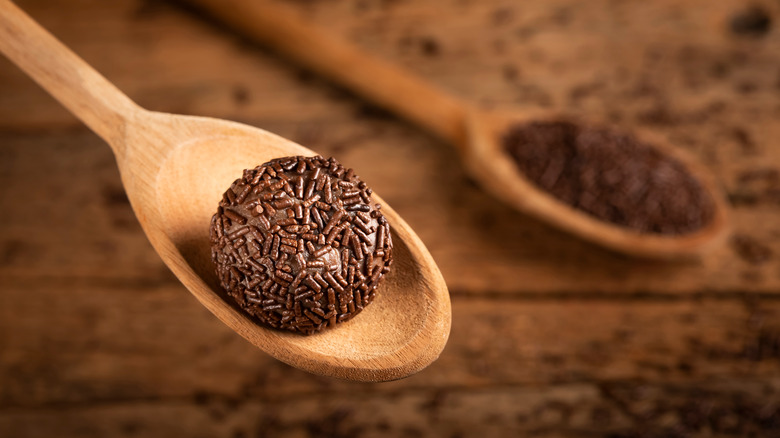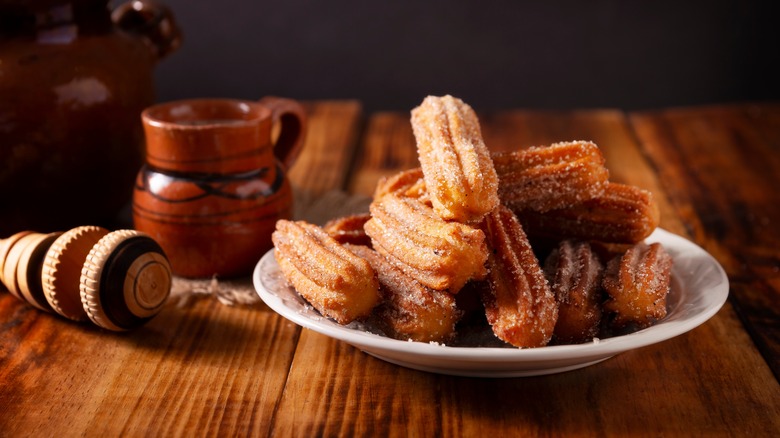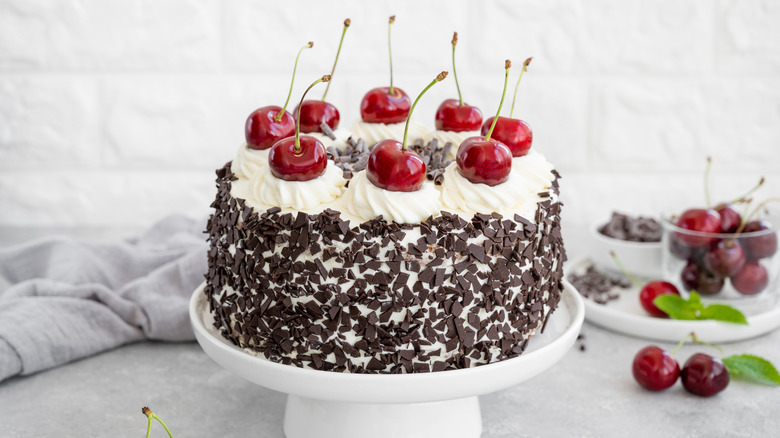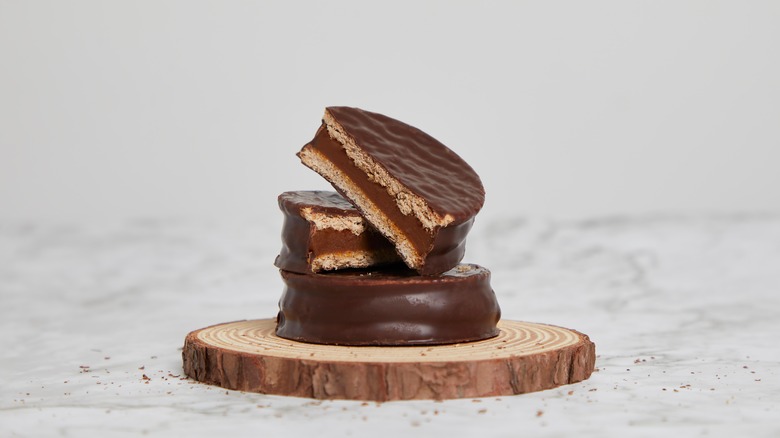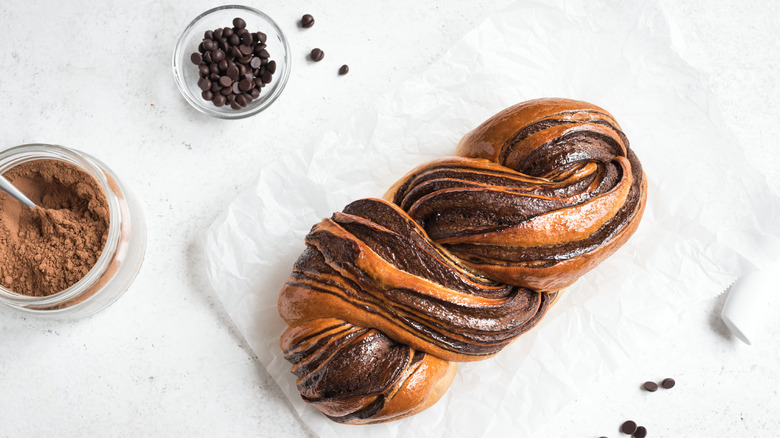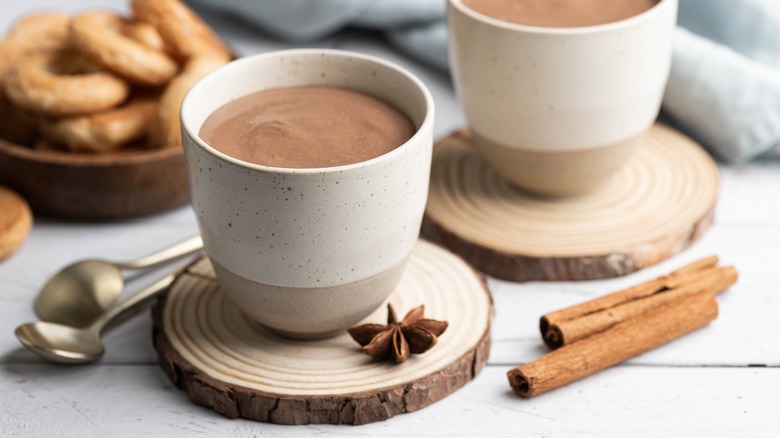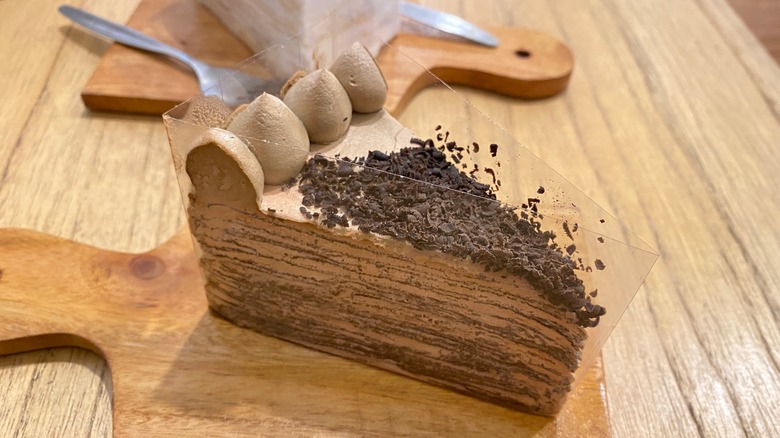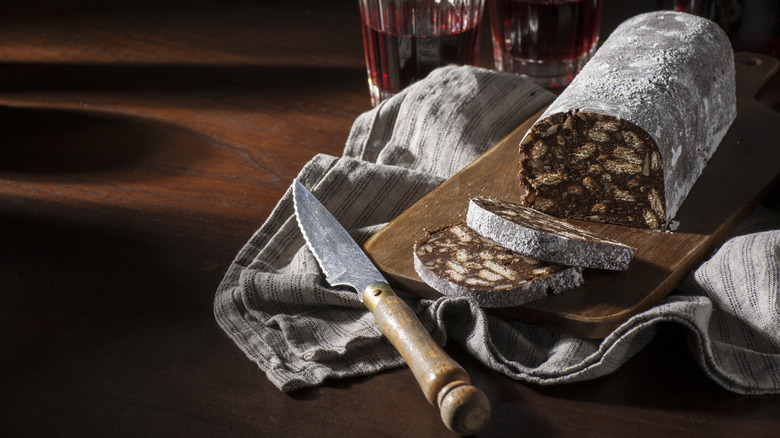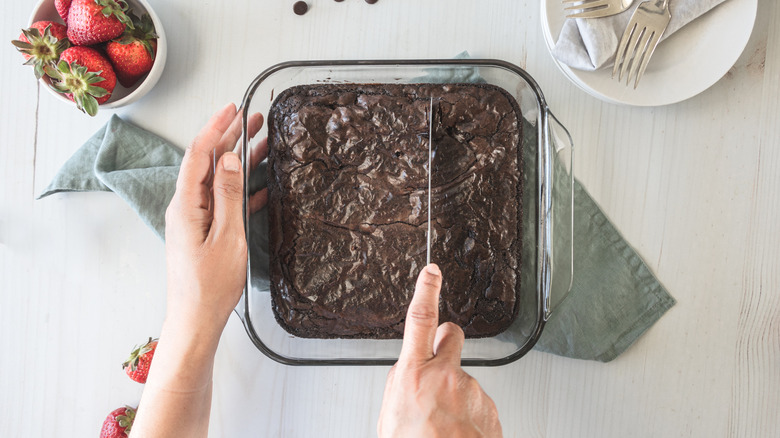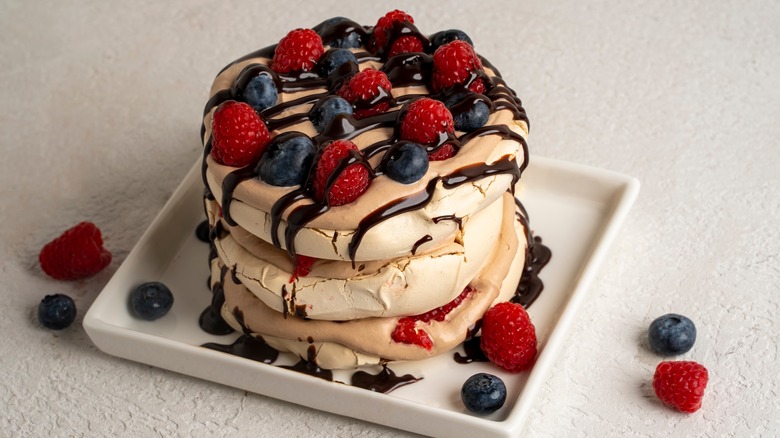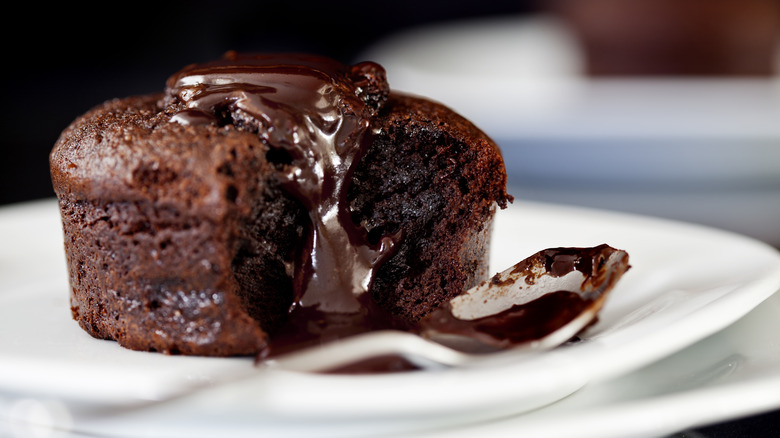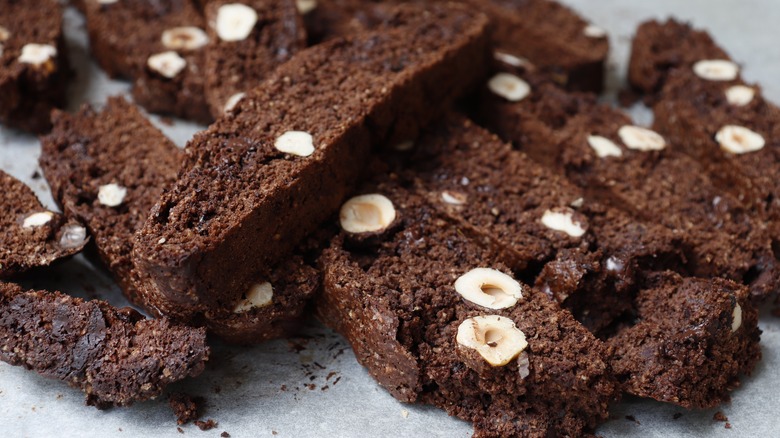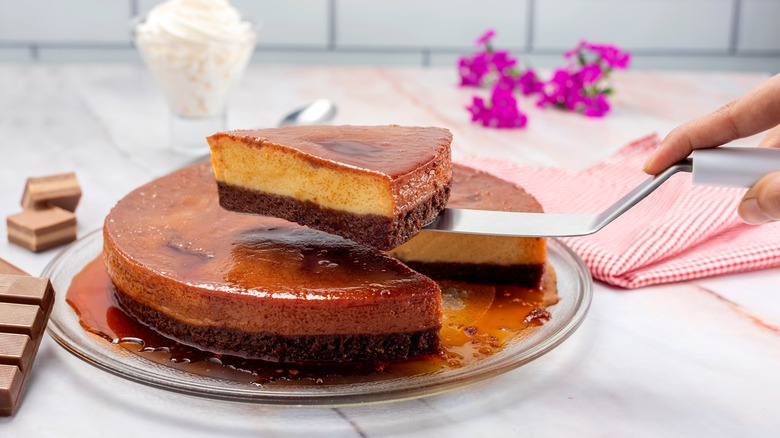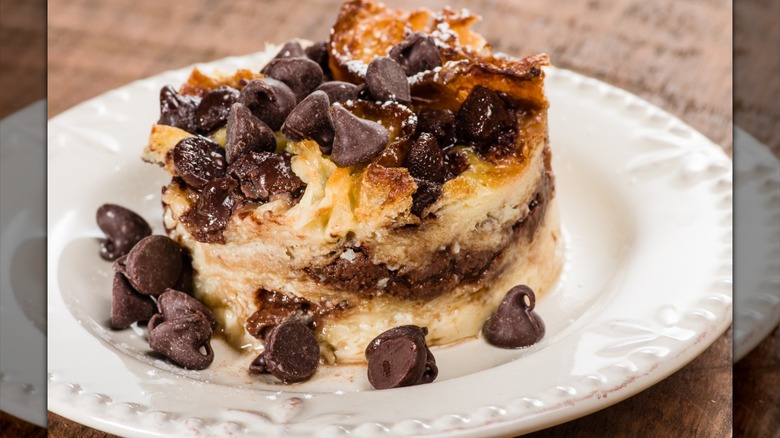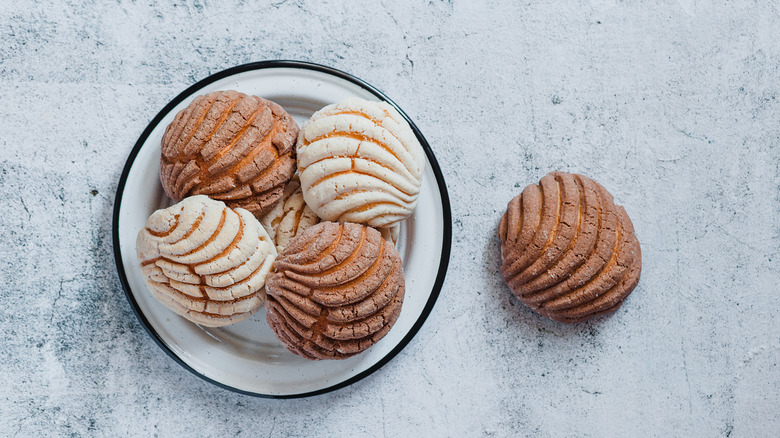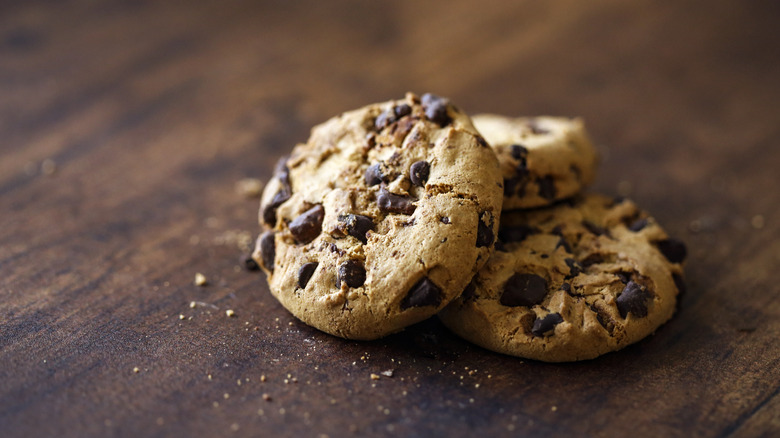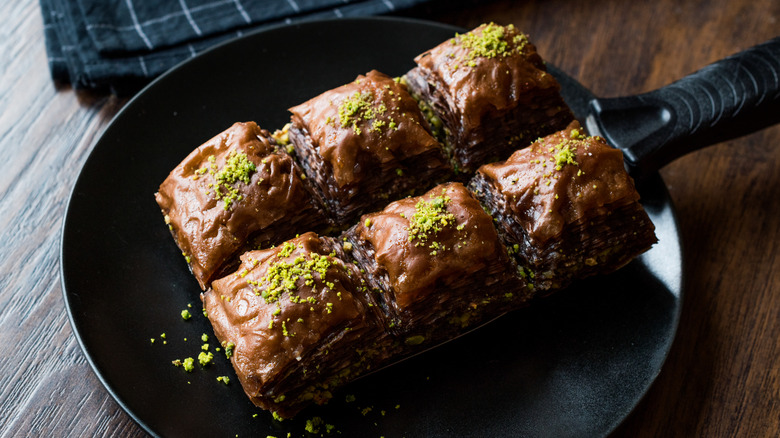21 Chocolate Desserts From Around The World You Should Try At Least Once
For much of its history, chocolate was thought to be a divine gift to humans. Ancient myths have it that cocoa, derived from the cacao tree, was consumed by Mayans in the form of unsweetened liquor to gain strength and courage. Originally a bitter drink, it was only after chocolate was brought back to Europe by colonizers that sugar was added and chocolate became synonymous with sweet treats.
Nowadays, chocolate is a global sensation; virtually every dessert menu has chocolate on it in some form. Although chocolate originated in Mesoamerica, most of the world's chocolate comes from Germany. However, almost every corner of the world – from Mexico to Japan to Austria — has its unique take on how to enjoy the majesty that is the cocoa bean.
There's a unique history behind every drink, dip, cake, and cookie that incorporates chocolate, and it often says a lot about the place it came from. With its unique power to permeate so many different gastronomic traditions, chocolate may just be divine after all. Read on to discover 21 chocolate desserts from around the world you should try at least once.
1. Chocolate mousse (France)
If you're an art buff, you may be familiar with the works of French painter Henri Toulouse-Lautrec. But one of his most famous works isn't a painting — it's chocolate mousse. Also an artist in the kitchen, Toulouse-Lautrec invented this fluffy, rich, chocolatey concoction in the late 1800s.
Originally referred to by the dubiously appetizing name "mayonnaise de chocolat," the standard chocolate mousse recipe blends melted chocolate, eggs, and heavy cream. And chocolate mousse is super versatile. You can make it with different types of chocolate, dress it up with fruit, nuts, and whipped cream, eat it by itself, or make a dreamy, decadent chocolate mousse cake.
2. Chocolate fondue (Switzerland)
Chocolate fondue, invented by a Swiss restauranteur during the '60s, is a great way to do a little DIY with your dessert. The word "fondue" is French for "melted," which is an ideal state for chocolate to be in when it hits your tongue to release its fatty, flavorful goodness onto your taste buds. The great thing about chocolate fondue is that you can make it your own.
Diners sit around a warm pot of melted chocolate and are given various sweet treats that they can cover with melted chocolate as they like. Some of the usual suspects that are great for fondue include strawberries, bananas, marshmallows, and cookies, but if you're feeling adventurous, you can dip just about anything you'd like in this rich, velvety pool of chocolate.
3. Sacher-Torte (Austria)
Austria is the birthplace of legends like Mozart, Klimt, and, of course, the Sacher-Torte. This chocolate cake has a storied past. The confection was invented by its namesake pastry chef, Franz Sacher, in 1832 when he was just 16 years old and has since become one of Austria's most well-known desserts.
The Sacher-Torte consists of a layer of apricot jam that's hidden between two fluffy chocolate sponges. The whole thing is covered with a rich, dark chocolate glaze and often served with a dollop of fresh whipped cream. You can try to replicate it at home, but the original recipe of the Sacher-Torte is a closely guarded secret known only to the chefs at the Hotel Sacher, which has locations in Vienna and Salzburg.
4. Chocolate budino (Italy)
Chocolate budino is the result of a delicious clash of cultures. The word "budino" comes from the English word "pudding," and the dessert itself is a sweet culinary cousin of savory puddings that were often made in medieval England. But the distinctly Italian budino also has roots as far back as the Roman Empire, where there was a dessert made with milk, honey, eggs, and flour.
Budino has a base of milk, eggs, and cornstarch and lends itself to a whole variety of sweet flavors, but adding chocolate gives the pudding just a hint of bitterness that rounds the dessert out. Lately, budino has enjoyed a moment in the culinary limelight, particularly in Los Angeles.
5. Brigadeiro (Brazil)
Named after a member of the Brazilian Air Force in the 1940s, brigadeiro is now as culturally important to Brazil as carnaval and caipirinhas. The traditional brigadeiro recipe uses sweetened condensed milk that is mixed with butter and cocoa powder and shaped into golf ball-sized spheres that are rolled around in sprinkles.
While the ingredients list is simple, timing is key when making brigadeiro, as the ingredients need to be heated up to a specific temperature and then cooled down to achieve their signature chewy texture. The little sweet treats are easy to serve as finger food desserts at parties and get-togethers.
6. Churro and chocolate (Spain)
No visit to Spain is complete without churros and chocolate. Though it's hard to imagine a world before this power couple existed, the churro (a long, thin wand of fried dough) was eaten all by itself in Spain for centuries. It was only after Spain colonized present-day Mexico, where cacao is native, that it was joined by the rich, warm embrace of dipping chocolate.
Many churro lovers in the United States may be used to churros that come covered in sugar and cinnamon, which is how they're often eaten in Mexico. But the telltale sign that you're at a traditional Spanish churrería is that the churros are served plain alongside a cup of dipping chocolate.
7. Black Forest gateau (Germany)
The origins of Germany's famous Black Forest gateau are as folkloric and mysterious as the Black Forest itself. While a cookbook from the 1930s holds the first reference to the Black Forest gateau, many believe its history stretches much further back. For centuries, the Black Forest region of Germany has been known for its sour cherries and Kirsch, a brandy made from cherries, two ingredients essential to a Black Forest gateau.
Layers of chocolate sponge soaked in Kirsch are separated by fresh whipped cream and cherries, and the cake is typically finished with whipped cream, cherries, and dark chocolate shavings that some claim resemble the shady forest. A bite of a Black Forest gateau is a journey through culinary history.
8. Alfajores de chocolate (Argentina)
If you went to Argentina and didn't eat an alfajor ... did you even go to Argentina? Alfajores have a history that stretches back to the eighth century when Arabs ruled southern Spain (the word "alfajor comes from the Arabic word "al-hasú" meaning "the filling"). While they may have Middle Eastern ancestry, the modern version of these snack-sized sandwich cookies is distinctly South American.
The classic alfajor is made of two crumbly cookies separated by a thick layer of dulce de leche — a sweet, creamy caramel-like sauce — or sweetened condensed milk. Chocolate is commonly incorporated into alfajores in two ways: adding cocoa powder to the cookie mix and dipping the alfajor in a chocolate coating after it's baked. In Argentina, shredded coconut pieces are also thrown into the mix.
9. Chocolate babka (U.S.)
New Yorkers know how to put a spin on just about anything, and babka is no exception. Babka (which translates literally from Yiddish as "little grandmother") made its way to New York with the waves of Jewish immigrants who arrived from Europe in the late 1800s.
While traditional babka was made with oil to keep it parve, it's now often made with butter, which gives modern babka a richer taste. Chocolate was only added to babka in the middle of the 20th century. Now, this swirly, dense, marbled loaf is a prized part of New York's culinary landscape.
10. Champurrado (Mexico)
There's no cozier way to start a chilly day than with a hot mug full of champurrado, a Mexican beverage that marries the robust texture of masa harina (corn flour) and the sweet, bitter bite of chocolate. Corn and chocolate were both important to the Aztec culture that thrived in Mexico before the arrival of Spanish settlers in the 16th century. Atole, which is just hot water thickened with corn flour, was used in Aztec rituals.Chocolate, spices, and sugar were added as the drink evolved over the years, and champurrado was born.
It's great to drink in the wintertime and tastes particularly delicious with a concha, a soft Mexican sweet bread.
11. Chocolate mille crepe cake (Japan)
With a name like mille crepe cake, you might think this chocolatey confection is from France, and you'd be partly correct. The crepe is undeniably French, as is the gateau de crepes, a layered cake made of a stack of crepes.
The mille crepe cake as we know it today, however, was invented by a pastry chef in Japan in the 1980s. The popular chocolate version of this visually stunning confection uses cocoa powder in both the crepe itself and in the cream that is carefully spread atop each crepe in a thin layer. The cake is then topped with a thick chocolate ganache. While making a mille crepe cake takes time, it's an impressive, delicious accomplishment.
12. Chocolate salami (Italy/Portugal)
If you think salami belongs strictly on a charcuterie board or in an Italian sandwich, think again. While chocolate salami probably originated on the Italian island of Sicily, it's a wildly popular dessert in both Portugal and Italy, where it's often served alongside coffee like a biscotti.
Made with chocolate that's shaped into a cylinder, chocolate salami is speckled with crunchy cookies, nuts, and dried fruit that look like the fat pockets in actual salami. On top of that, the sausage-shaped confections are dusted with powdered sugar that looks like the fungus that grows naturally on salami, causing some people to wonder whether these links of chocolate salami actually contain any meat (they don't).
13. Brownie (U.S.)
If you're from the U.S., few sweets spell comfort like brownies. These chewy, chocolatey squares are easy to make and please almost any crowd, which is probably why the recipe for brownies has basically stayed the same since their introduction into American cookbooks in the late 1800s.
Flour, butter, sugar, eggs, and, of course, chocolate are the building blocks of a simple brownie recipe, although innumerable variations have been created over the years. And if you don't feel like making brownies from scratch, there are plenty of easy ways to spruce up box brownie mix and make it your own.
14. Chocolate pavlova (Australia)
With chewy, chocolatey meringue, whipped cream, and fresh fruit, chocolate pavlova may be the most beloved chocolate treat to come from down under. This dessert owes its name to a Russian ballerina named Anna Pavlova. With their centuries-long rivalry, Australia and New Zealand both claim the pavlova as their own, although meringue-based desserts like this one were made in Austria as early as the 1700s.
The outer layer of a chocolate pavlova is made with beaten egg whites, cocoa powder, and chopped chocolate whipped into the shape of a bowl and then cooked on low heat. Once cooled, the meringue bowl is filled with fresh whipped cream and the fruit of your choice (raspberries go particularly well with the flavors here). Pavlova doesn't keep for long, which is the perfect excuse to finish this light, airy dessert in one sitting.
15. Chocolate soufflé (France)
The chocolate soufflé is a classic example of the refined approach to cooking typical of French haute cuisine. Chocolate soufflé is a famously challenging dessert to make and famously delicious to eat. The soufflé can be traced as far back as the 1700s, but it wasn't until the middle of the 20th century that it became synonymous with fine dining in France.
Soufflés can be sweet or savory, and a chocolate soufflé is perhaps the most famous version of the former. Beaten egg whites bestow the soufflé with its famously fluffy texture that provides a perfect vehicle for the rich complexity of chocolatey flavor. But a chocolate soufflé is fleeting — it must be eaten immediately, or it will collapse into itself. C'est la vie!
16. Chocolate biscotti (Italy)
An afternoon espresso in Italy wouldn't be complete without the sweet crunch of biscotti. And the slightly bitter, acidic notes of coffee go perfectly with the rich, deep taste of chocolate, which is used to make some of the best biscotti Italy has to offer.
The characteristic crunch of biscotti dates back to ancient Rome, where the hard, dry cookies were valued by soldiers because of their long shelf life and ease of transport. When chocolate entered the culinary scene in Europe centuries later, it eventually made its way into biscotti. Hazelnuts are often added to chocolate biscotti for their pretty appearance and nutty flavor.
17. Chocolate flan (Mexico)
Every once in a while, there's a delicious side effect that arises from a colonial cultural clash. For example, flan, a rich custard dessert with a history that stretches as far back as the Roman Empire, was brought to the Americas by Spanish colonists.
Flan became popular in Mexico, where chocolate had been used in cooking since before the arrival of the Spaniards, and it was only a matter of time before the chocolate flan was born. The creamy caramel richness of flan goes perfectly with the complex flavor of chocolate. And with a pretty simple ingredients list, a taste of Mexico is never too far away.
18. Chocolate bread pudding (U.K.)
Bread pudding comes from humble origins. In fact, people used to call this delicious dessert "poor man's pudding" because it was a way to make leftover stale bread palatable. But this distinctly English dessert has come a long way and enjoys a coveted spot on fine dining dessert menus.
With its simple base of bread, eggs, butter, milk, and spices, bread pudding is super easy to customize, and many versions incorporate chocolate in some way. One version uses day-old croissants and chocolate chips, while another starts by dunking pieces of challah bread in a chocolate custard before baking. If you're looking to satisfy your chocolate craving, bread pudding might just be the way to do it.
19. Chocolate concha (Mexico)
If you've ever been to a Mexican bakery, you've seen a concha. In fact, these shell-shaped sweets (concha means shell in Spanish) might be the most popular pastry in Mexico. Like most Mexican baked goods, the concha comes from the long tradition of Iberian confectionary that came to Mexico during the years of Spanish colonization.
They come in several flavors, but given Mexico's long pre-Columbian history with chocolate, the chocolate concha is particularly emblematic of the region's unique culinary culture. The soft, fluffy texture of the concha contrasts with the slightly crunchy crumble of the topping, which is made with sugar, butter, flour, and cocoa powder. A chocolate concha goes well with a cup of hot coffee.
20. Chocolate chip cookie (U.S.)
It's difficult to imagine life in the U.S. without the chocolate chip cookie, but life in this country before the 1930s was disastrously chocolate chip cookie-less — until now-legendary baker Ruth Wakefield invented the treat.
Nowadays, you can find this highly snackable dessert in just about any grocery store or bakery around the country. Chocolate chip cookies exist in just about every form imaginable. While some prefer the buttery crunch of a crisp cookie, others like a soft, gooey dough punctuated by pockets of sumptuous melted chocolate. With their simple recipe and versatility, it's safe to say that the chocolate chip cookie is here to stay as one of the greatest culinary icons in the pantheon of American desserts.
21. Chocolate baklava (Eastern Mediterranean)
The baklava is so near and dear to so many countries in the Eastern Mediterranean that attributing its origins to a single nation seems wrong. What we can say, though, is that the chocolate version of this flaky dessert comprises layers of dough stretched paper thin and baked with honey, nuts, and chocolate until perfectly crunchy.
While it may not be the traditional way of making baklava, the addition of chocolate adds richness to the light, flaky pastry and complements its nutty flavor profile. Back when baklava was just taking off during the days of the Ottoman Empire, it was known as a labor-intensive dessert that required a trained hand and hours of work. Nowadays, you can make chocolate baklava easily in your own kitchen with the advent of store-bought phyllo dough.
